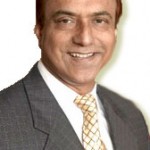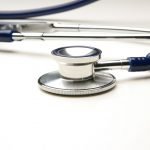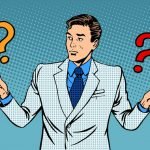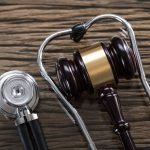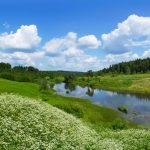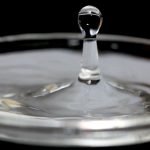Panchakarma
An Ayurvedic Detoxification Program
Virender Sodhi, MD (Ayurveda), ND
Panchakarma (PK) is an effective cleansing and rejuvenation program that is part of the 5000-year-old science of ayurveda. In Sanskrit, panch means 5, and karma means processes. In other words, PK comprises 5 main detoxification methods. Used for centuries to treat a wide variety of diseases, this ancient technique has been shown to be particularly successful in relieving modern ailments.
The benefits of PK are often profound. After PK treatments, one will likely experience significant health improvements in a short time.
Panchakarma is a detoxification process that involves 5 major cleansing treatments. It is divided into the following 3 phases:
(1) poorvakarma (preparation for cleansing), (2) PK (main detoxification), and (3) pashchatyakarma (post-PK).
The objectives of this process are to stimulate the layers of toxins from the body and to bring them where they can be excreted. Poorvakarma involves the following: (1) snehan, or oleation, treatment and (2) swedan, or hyperthermia, treatment. Ayurvedic medicine has defined many methods of hyperthermia.
Snehan (Oleation) Therapy
There are 2 types of snehan therapy. These include internal oleation and external oleation.
For internal oleation, various oil preparations are used depending on the body type and pathologic condition. Anatomically, we have layers of fat cells internally and externally. Oils can help to exchange the toxic loads. Different ghee preparations and other oils are consumed with food. For example, you may consume medicated or plain ghee (1 teaspoon to
1 tablespoon) a couple of times per day.
For external oleation, called abhayanga, different oil preparations are used. Oils are used to stimulate the lymphatic system and to bring the toxic loads to their excretory sites.
Various massage oils are used based on different body types and pathologic conditions. There are 107 energetic points on the body, called marma points. These points are similar to those used in acupressure or acupuncture. Two technicians usually work simultaneously on the whole body, rubbing with a special technique on the marma points, while also performing lymphatic drainage massage.
The advantages of snehan massage are several. These include the following:
First, the oils used are fatty acids. They absorb readily through the skin, and herbs that are put in the oils are absorbed as patch medicine, reach the nervous system, and pass the blood-brain barrier. There is systemic circulation of herbs and fatty acids. The fats exchange with bad fat in the body, and the herbs stimulate the internal organs, especially the liver, lymphatics, spleen, kidney, heart, and nerves.
Second, massage helps to relieve tension and convey a sense of relaxation. It stimulates the parasympathetic nervous system, allowing further relaxation and healing.
Third, with lymphatic drainage toxins are drained and pushed toward the liver, spleen, and lymphatics. It is not uncommon to see swollen lymph nodes, gastrointestinal symptoms, fatigue, nausea, or aggravated disease. Naturopathic physicians are very familiar with healing crisis, and I have many interesting stories to share about this phenomenon. A female patient developed a huge abscess in the middle of the left shinbone. Coming from India, I have seen many abscesses but never one this big. Hers was a grapefruit-sized abscess. The patient started to have flashbacks. She remembered a traumatic event during which a nail hit her on the left shinbone. When the abscess finally healed, it looked like a nail hole.
Fourth, we are stimulating the immune system during snehan massage. White blood cell counts and natural killer cell counts are especially shown to be higher after a massage treatment.
Fifth, patients are given medicated ghee or other oils to take orally in conjunction with snehan massage. The objective is to allow toxins to bind with fats, and oils have anti-inflammatory properties.
There are numerous functions of fat. These include the following: (1) Some fats are essential elements that the body cannot manufacture, specifically omega-3s, omega-6s, and omega-9s. (2) Fats help to bolster immunity and fight inflammation. (3) Conjugated linoleic acid inhibits cancers. (4) Fats help to restore health in individuals with diabetes or alcoholism.
(5) Fats contribute to a healthy heart.
(6) Fats help to distribute nutrients all over the body. (7) Fats assist in tissue exchange during detoxification.
Swedan (Hyperthermia) Therapy
In swedan therapy, body temperature is raised using various techniques, such as dry heat, sun heat, wet heat, or exercise, or by applying local heat to an area, raising body temperature. The most common method of raising body temperature is to place the body in an herbal steam sauna where herbs are boiling. Most herbs have an aromatic effect and are vata balancing. In our clinic, we also use far-infrared sauna. Body temperature is raised, usually to 100 to 104°F depending on what type of condition is being treated.
The advantages of hyperthermia
include the following: (1) Sweating helps
to eliminate toxins and detoxify the body.
(2) Increasing body temperature kills tumors, bacteria, viruses, and fungi.
(3) Hyperthermia enhances the immune system, especially the white blood cell count, and assists in removing toxic materials, bacteria, viruses, and fungi from the body. (4) Sweating stimulates normal tissue growth. (5) Hyperthermia enhances the effects of chemotherapy and radiation therapy.1 (6) Sweating helps to stimulate natural killer cells and disrupts the signals of cancer cells.
Patients usually receive several treatments depending on the severity of disease. In our clinic, we perform about 10 rounds of snehan (massage with oils) and swedan (hyperthermia) treatment before proceeding to primary PK detoxification.
Primary PK Detoxification
Snehan and swedan treatments are performed. The physician then assesses whether the patient is ready for primary detoxification.
The 5 processes of PK are as follows: vaman (vomiting), virechan (purging), basti (enemas), nasya (nasal treatment), and raktmokshan (bloodletting).
1. Vaman (Vomiting), Which May Be Replaced by Fasting
Since coming to America, I have realized that patients do not like the idea of vomiting, so I have replaced vomiting with fasting. Traditionally, vomiting was induced using many different methods, but the primary herb used was emetic nut (Hindi madanfal).
Depending on a patient’s condition, he or she fasts on vegetable smoothies, fruit smoothies, protein smoothies, herbal teas, broth from vegetables, meat soups, or fish soup. I usually prescribe 2 to 7 days of modified fasting.
The advantages of fasting are the following2,3: (1) We are giving a complete rest to the body. (2) The body has the chance to burn off excessive toxins. (3) The body’s defenses, especially the immune system, become very active.
2. Virechan (Purging)
A purge is given using castor oil or an ayurvedic herb mixed with juices and ginger, turmeric, mint, and other substances. Usually, the patient will have about 3 to 8 loose bowel movements. A good purge is considered complete when only clear liquid is evacuated. The main caution is to avoid dehydration by drinking plenty of fluids, broths, and herbal teas. The patient is placed on a special diet of rice and mung beans or lentils. A mixture of cumin, ginger, black pepper, and salt is used to help with digestion. A small amount of ghee or other oils like flaxseed oil or olive oil is added to give the intestine a soothing effect.
The advantages of purging are that it is specially designed to flush the liver, spleen, and gallbladder. The rationale behind this is that, when individuals crash diet or suddenly change their dietary habits, their gallbladders collect fat, which turns into gallstones within a few days. It is not uncommon for persons with obesity to develop gallstones, especially when crash dieting. Purging is the most beneficial way to unload toxins from the liver, spleen, and gallbladder.
After fasting and purging, herbal oil massages and herbal steam saunas are again performed for 4 or 5 treatments. The main focus is now on the large intestine. Probiotics preparations are added, given 15 to 20 minutes before meals to normalize intestinal flora.
3. Basti (2 Kinds of Enemas)
Basti is the rectal introduction of medicated fluids. There are 2 types of basti, cleansing basti and restorative basti, which are performed to cleanse the large intestine.4 The large intestine represents the largest gastrointestinal absorption area. It is the warehouse of more than 500 species of bacteria, which help our bodies produce vitamin B12 and cancer-protective factors. If the large intestine is not clean and does not have its 500 species of normal flora, it is not doing its job correctly.
A cleansing basti, or enema, is performed with herbs, usually a mixture of Triphala, honey, salt, or Epsom salts. The cleansing basti is used to stimulate the large intestine to release its toxic content.
The restorative basti is performed to replenish mircoflora in the intestine that may have been eroded by the cleansing herbs. In this process, yogurt culture, acidophilus, ghee, sesame oil, and herbs like ashwagandha, Centella asiatica, and Trifal are used. Ghee is a rich source of butyric acid, and sesame oil contains propanoic acid. Butyric acid and propanoic acid are natural foods for microflora of the large intestine. With restorative basti, natural flora of the large intestine are restored. This process also helps to restore the lost function of the intestine.
4. Nasya (Nasal Treatment)
Nasya, or nasal treatment, is usually performed along with massage and sauna therapy. The sinuses are heated with wet heat or steam, a special massage is done to help drain the lymphatics, and then a few drops of specialized herbal oils are instilled into the nostrils.
There are several advantages of nasya, including the following: (1) Heat helps the sinuses to expand and allows them to drain more easily. (2) The herbal oil helps to drain and cleanse the sinus mucous membranes and nasal passages. (3) The oil provides a thin coating on the mucous membranes. (4) The nervous system is localized at the nose and is reactive. Oil helps to provide a barrier between the nasal mucous membrane and pollens, dust mites, dust, and any foreign substances that come in contact with the nose, preventing reactivity. (5) Oil helps to promote natural functions of the nose to smell and sense.
5. Raktmokshan (Bloodletting)
The final treatment of PK cleansing is bloodletting. This is performed in many different ways in ayurvedic medicine, usually by venipuncture. I prescribe blood donation. Statistically, it has been shown that people who donate blood on a regular basis live 5 to 10 years longer than those who do not.4 Blood donation is thought to dilute the toxic load from the body. Localized bloodletting is done using leeches for patients with arthritis, gangrene, or a putative process in their body like carbuncles or boils. Ayurvedic medicine has been using leeches for many centuries.
Another treatment that deserves mention is called shirodhara, which is frequently advertised with a picture of oil dripping over the forehead. Shirodhara treatments are very powerful anxiolytics and help to promote natural sleep. Many patients with insomnia will sleep like a baby after one treatment of shirodhara. One of our friends, Dr Uebaba from the University Toyama (Toyama, Japan), and his colleagues5 developed a robotic shirodhara, whereby the volume of liquid, pressure of liquid, and temperature are maintained. They noted a powerful anxiolytic effect and altered state of consciousness in patients undergoing the treatment. Uebaba et al speculated that psychophysiological effects of lavender shirodhara are rendered by the following 3 mechanisms: (1) the well-known relaxing action of essential oils from Lavender angustifolia mediated by the olfactory nerves, (2) the pharmacological action of substances in sesame oil or lavender essential oil absorbed through the skin or mucosa, and (3) the physiological effect of sesame oil dripped on the forehead induced by the somatoautonomic reflex through thermosensors or pressure sensors in the skin or hair follicles via the trigeminal cranial nerve. This complex pharmacophysiopsychological action of ayurvedic oil treatment may provide a useful model for future pharmacophysiopsychotherapy.
Post-PK Treatments
In post-PK sessions, restorative and adaptogenic herbs are given to restore and maintain body functioning at an optimal level. Preparations of Emblica officinalis, Terminalia chebula, Terminalia belerica, shilajit, Withania somnifera, Asparagus racemosus, Centella asiatica, Bacopa monnieri, Tinospora cordifolia, and many other adaptogens are given. These adaptogens are called rasayanas. There are various rasayanas for different age groups, sexes, seasons, organs, and diseases. Rasayanas can be taken on a long-term basis, without any ill effects on the body.
Studies Conclude the Benefits of Ayurvedic Detoxification
Numerous research studies have shown
the benefits of ayurvedic detoxification.
The authors of a study6 published in Alternative Therapies in Health and Medicine found that ayurvedic detoxification is a safe standardized procedure that can mobilize lipid-soluble toxicants and stimulate their excretion. In the cross-sectional study, gas chromatographic analysis of 9 polychlorinated biphenyl congeners and 8 pesticides revealed that serum polychlorinated biphenyl levels were significantly lower in the detoxification group than in a control group. There was a 46% decrease in polychlorinated biphenyl levels and a 58% decline in β-hexachlorocyclohexane levels. Polychlorinated biphenyls and β-hexachlorocyclohexanes are pesticides and insecticides found in our food chain due to overuse of these chemicals and are believed to be the cause of many cancers, neurological diseases, and other disorders. It would take 20 years to detoxify the body of the substances under normal conditions.
In another study7 among patients diagnosed as having progressive cerebellar ataxia, men were treated with shirobasti (therapeutic retention of medicament over the scalp), and women were treated with shirodhara (pouring of a steady stream of medicament on the forehead). Both sexes used dhanvantaram tailam (medicated oil) for 45 minutes daily, followed by abhyanga (massage) with dhanvantaram tailam and steam sauna for 14 days. There was improvement in their balance.
Elsewhere, psychoneuroimmunological changes using shirodhara treatments revealed a decrease in anxiety and an increase in altered states of consciousness.5 Plasma noradrenaline levels and urinary serotonin secretion also decreased after shirodhara treatment. Plasma levels of thyrotropin, dopamine, and natural killer cells in the intervention group differed from those in a control group.
Finally, in another study8 shirodhara was administered with medicated sesame oil that included lavender essential oil. The treatment was shown to act as a potent anxiolytic.
My 31 years of clinical experience with PK treatments is no less than miraculous. Patients who are taking a bag full of prescription drugs have discontinued most of them and feel great. Patients with hypertension, rheumatic diseases, type 1 and type 2 diabetes mellitus, psoriasis, fibromyalgia, and even cancer have experienced tremendous benefits from these treatments. Heavy metal loads decrease within a couple of months with PK treatments, much faster than with chelation therapy. Patients with rheumatoid arthritis are able to discontinue drugs within 3 to 9 months. With PK treatment, a patient who had metastatic ovarian cancer survived 13 years after diagnosis. Patients with Lyme disease have gone into remission. Panchakarma treatments have helped to cure almost every kind of disease. It is a simple ayurvedic approach that enables the body to cleanse and allows the innate immune system and intelligence to restore balance.
Virender Sodhi, ND, MD (Ayurveda) is an internationally respected Ayurvedic and naturopathic physician, and one of the first to practice Ayurvedic medicine in the U.S. He received his MD (Ayurveda) after completing six years of medical training in India. He came to the U.S. in 1986 to share Ayurveda as part of a cultural exchange program. In 1988, Dr. Sodhi graduated from Bastyr University. He treats patients from all over the world at the Ayurvedic and Naturopathic Medical Clinic in Bellevue, Washington. He also lectures extensively throughout both the U.S. and other countries, and is the founder of Ayush Herbs, Inc. Visit www.ayurvedicscience.com.
Franckena M, Lutgens LC, Koper PC, et al. Radiotherapy and hyperthermia for treatment of primary locally advanced cervix cancer: results in 378 patients. Int J Radiat Oncol Biol Phys. 2009;73(1):242-250.
Kjeldsen-Kragh J, Haugen M, Borchgrevink CF, et al. Controlled trial of fasting and one-year vegetarian diet in rheumatoid arthritis. Lancet. 1991;338(8772):899-902.
Uchiyama-Tanaka Y. Colon irrigation causes lymphocyte movement from gut-associated lymphatic tissues to peripheral blood. Biomed Res. 2009;30(5):311-314.
Tuomainen TP, Salonen R, Nyyssönen K, Salonen JT. Cohort study of relation between donating blood and risk of myocardial infarction in 2682 men in eastern Finland. BMJ. 1997;314(7083):793-794.
Uebaba K, Xu FH, Ogawa H, et al. Psychoneuroimmunologic effects of Ayurvedic oil-dripping treatment. J Altern Complement Med. 2008;14(10):1189-1198.
Herron RE, Fagan JB. Lipophil-mediated reduction of toxicants in humans: an evaluation of an Ayurvedic detoxification procedure. Altern Ther Health Med. 2002;8(5):40-51.
Sriranjini SJ, Pal PK, Devidas KV, Ganpathy S. Improvement of balance in progressive degenerative cerebellar ataxias after Ayurvedic therapy: a preliminary report. Neurol India. 2009;57(2):166-171.
Xu F. Pharmaco-physio-psychologic effect of Ayurvedic oil-dripping treatment using an essential oil from Lavendula angustifolia. J Altern Complement Med. 2008;14(10):1189-1198.


